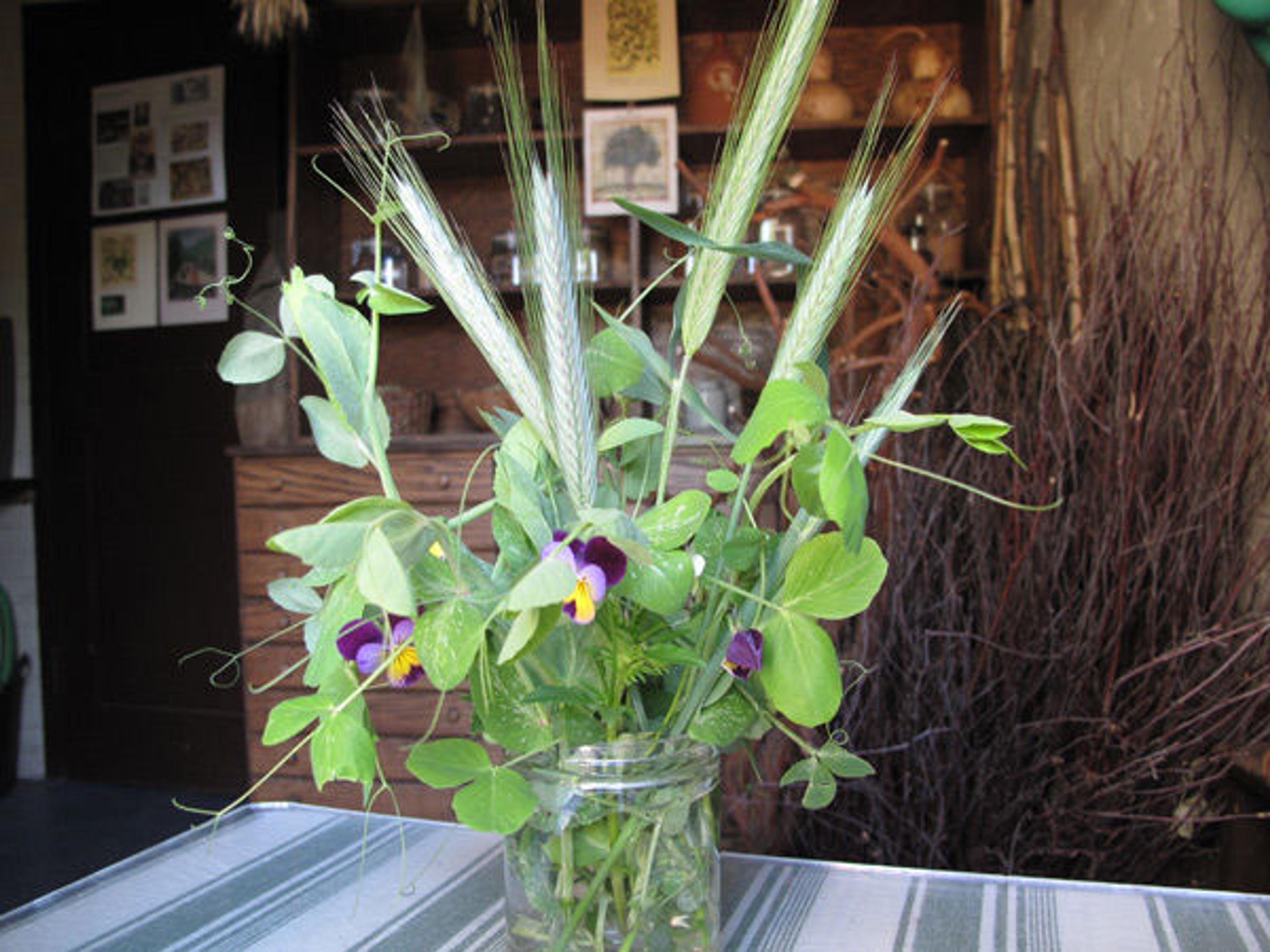
This bouquet of greens from the garden includes pea shoots (Pisum sativum), a climbing plant, as well as and heart's ease (Viola tricolor) and rye (Secale cereale).
«Of all plants, those that climb are the most evocative of a garden's bucolic and idyllic setting. In the Middle Ages, artists and artisans took inspiration from climbing plants, as evidenced throughout the collections of The Cloisters. From the vines carved on capitals to the gilded margins of medieval manuscripts, vining and climbing plants are a recurring motif in medieval art.»

Left: Hops (Humulus lupus) in the herb garden at The Cloisters. Right: Red bryony (Bryonia dioica), also in the garden
The climbing plants in our herb garden have relished the first warm days of spring. The pea shoots (Pisum sativum) are up, and they provide a bounty of fresh, leafy tendrils that are delicious in a spring salad. The serpentine stems of the hops (Humulus lupus) sweep around in ever-widening arcs, grasping at the newly installed supports. Extra clippings from these are a tasty addition to a stir-fry. In another corner of the garden, the red bryony (Bryonia dioica) has emerged in earnest as it gathers energy from its fleshy roots' stored reserves.
Wide-angle time-lapse video showing the hops climbing up their supports. Video by Andrew Winslow
How Plants Behave, a slim text published in 1872 by the botanist Dr. Asa Gray, is the second volume of a once-popular series entitled Botany for Young People.1 I treasure this book for its fascinating, and generally accurate, exploration of the subject of botany. I mention it here because of its beautiful illustrations of twining, climbing, clambering, carnivorous plants that adorn the cover and page margins. This presentation follows a long tradition that was treasured in medieval times. The illuminated manuscripts of the Middle Ages (see example) had lavish vine motifs—some of which are identifiable by leaf form and tendrils—rendered with varying degrees of artistic license. These illustrations are redolent of the wild garden so embodied by the climbing plants.
Time-lapse video showing the nastic movement of the hops shoots. Video by Andrew Winslow
In our garden, the vines defy our efforts to curtail their wide lazy arcs. Consulting Dr. Gray, we learn that they move by day and by night with varying speeds depending on temperature. The sweeping movement of plants in search of support is referred to as "nastic movement." This movement is controlled by plant hormones and is not a direct response to external stimuli. Tropisms, on the other hand, are a plant's direct responses to stimuli; an example of this is a seedling bending toward light.2
While botany was poorly understood in the Middle Ages, we can see that the movement of plants was an inspiration to medieval artists and students of nature. For example, there are frequent references in medieval texts to the heliotrope, the "sun-turning" flower.3 The heliotropes mentioned in these texts were likely in the composite family rather than the borage family, which is where the modern garden heliotrope (Heliotropium sp.) is classified. That ancient name now lends itself to the modern term heliotropism, which describes the aforementioned diurnal motion. Then, as now, we marvel at plants' behavior.
Notes
1. Asa Gray, Botany for Young People, Part II. How Plants Behave: How They Move, Climb, Employ Insects to Work for Them (New York, Cincinnati, Chicago: American Book Company, 1872).
2. Brian Capon, Botany for Gardeners: An Introduction and Guide (Portland: Timber Press, 1993).
3. E. von Erhardt-Siebold. "The Heliotrope Tradition," Osiris 3 (1937), 22–46.